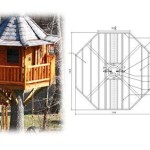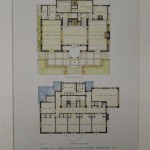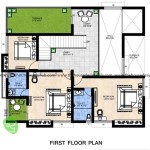Essential Aspects of Residential House Floor Plan With Dimensions
A well-designed floor plan is crucial for creating a functional and comfortable living space. When planning a residential house, it is essential to consider various aspects to ensure that the layout meets the needs and preferences of the occupants. Dimensions play a critical role in determining the flow of space, furniture placement, and overall functionality of the house. Here are some key elements to consider when creating a residential house floor plan with dimensions:
1. Purpose and Function of Spaces
Before determining the dimensions, it is essential to define the purpose and function of each room or space. Consider the activities that will take place in each room and the furniture and equipment required. This will help determine the optimal size and shape for each space.
For example, a living room should be large enough to accommodate seating arrangements for entertaining guests or family gatherings. A kitchen requires sufficient space for appliances, counters, and storage to facilitate meal preparation and dining. Bedrooms should provide adequate room for beds, dressers, and other furniture.
2. Flow of Space and Circulation
The flow of space and circulation within the house is essential for both functionality and comfort. The layout should allow for seamless movement between different rooms and areas, without any bottlenecks or obstructions. Dimensions play a crucial role in ensuring adequate space for movement, furniture placement, and access to amenities.
Consider the typical flow of activities within the house and ensure that the dimensions provide sufficient space for people to move around comfortably. For example, the entryway should be wide enough to allow for easy entry and exit, while hallways should be wide enough to accommodate furniture and avoid congestion.
3. Furniture Placement and Arrangement
The dimensions of the house should take into account the furniture placement and arrangement. Consider the size and scale of the furniture that will be used in each room to ensure that it fits comfortably and does not overcrowd the space.
Dimensions should allow for appropriate clearances around furniture for ease of movement and access. For instance, there should be sufficient space between the bed and dressers in a bedroom, and between seating arrangements in a living room.
4. Structural Considerations
The dimensions of the house should align with structural considerations. The size and shape of the house will impact the foundation, framing, and other structural elements. It is essential to ensure that the dimensions are feasible from a structural standpoint and comply with building codes.
Structural considerations may limit the flexibility of the dimensions, so it is important to consult with architects or engineers to determine the optimal dimensions for the house's structure.
5. Scale and Proportions
The dimensions of the house should reflect a sense of scale and proportion. The size and shape of each room should be balanced and harmonious in relation to the overall size of the house. Avoid creating rooms that are disproportionately large or small.
Scale and proportions also affect the perception of space. For example, a room with high ceilings and large windows will feel more spacious than a room with low ceilings and small windows, even if the dimensions are the same.
6. Natural Light and Ventilation
The dimensions of the house should allow for ample natural light and ventilation. Consider the orientation of the house and the placement of windows to maximize daylighting and cross-ventilation.
Dimensions should ensure that rooms have sufficient window openings to provide natural light and fresh air. This can impact the size and shape of windows and doors, as well as the layout of the rooms.
7. Accessibility and Inclusivity
The dimensions of the house should promote accessibility and inclusivity for all users. Consider the needs of individuals with disabilities and design the house accordingly.
Dimensions should allow for wider doorways, accessible bathrooms, and ramps or elevators where necessary. Universal design principles should be incorporated into the floor plan to create a space that is comfortable and accessible for all.
By carefully considering these essential aspects, architects and homeowners can create residential house floor plans with dimensions that optimize functionality, comfort, and overall livability.

12 Examples Of Floor Plans With Dimensions

Amazing Beautiful House Plans With All Dimensions Engineering Discoveries Create Construction Plan

How To Read A Floor Plan With Dimensions Houseplans Blog Com

How To Read A Floor Plan With Dimensions Houseplans Blog Com

12 Examples Of Floor Plans With Dimensions

A Floorplan Of Single Family House All Dimensions In Meters Scientific Diagram

Small House Design 2024001 Pinoy Eplans Floor Plans
How To Do A Floor Plan For Residential Quora

Cape Cod House Plan With 3 Bedrooms And 2 5 Baths 7645

12 Examples Of Floor Plans With Dimensions








